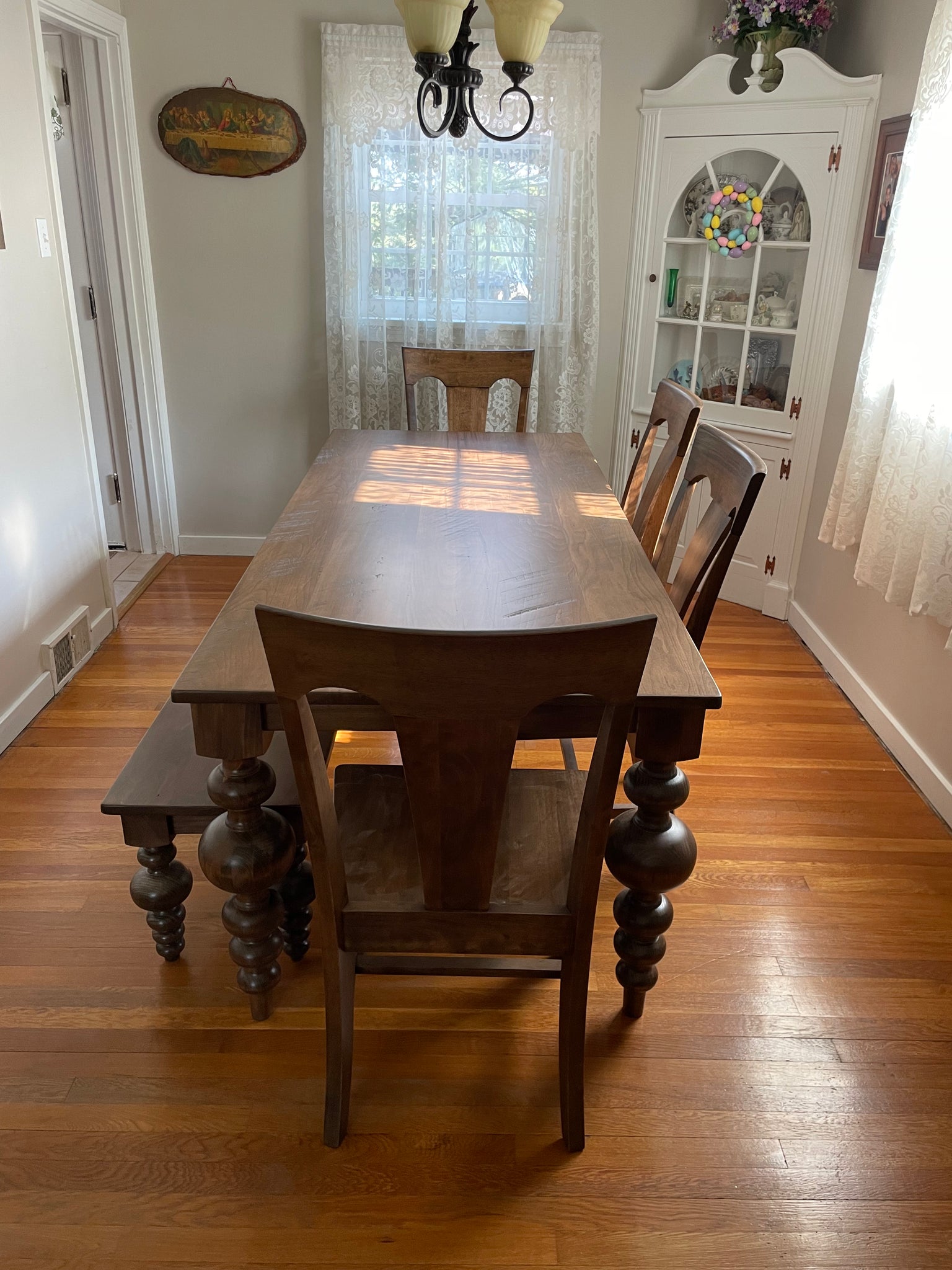Distinct Dining Room Table Legs to Transform Your Eating Location
Distinct Dining Room Table Legs to Transform Your Eating Location
Blog Article
A Comprehensive Consider Dining Table Leg Styles: Finding the Perfect Match
Choosing the right table leg design is vital for both aesthetic charm and sensible functionality. Standard 4 legs supply classic style and stability, while the pedestal base supplies increased legroom and a contemporary look. For those with larger tables, trestle legs guarantee strong support, whereas barrette legs introduce a mid-century modern-day ambiance with their minimal design. The x-shaped legs blend contemporary design with boosted stability. Each of these options brings one-of-a-kind advantages, making the selection greater than just an issue of choice. Explore even more to discover which design perfectly enhances your eating area and lifestyle.
Traditional 4 Legs
Amongst the different types of dining table leg designs, the traditional four-leg design remains a classic selection for several families. 4 legs provide well balanced assistance, making sure the table stays stable and capable of birthing considerable weight (dining room table legs).
From a visual point of view, the conventional four-leg design can be easily adjusted to various indoor designs. Whether crafted from wood, steel, or a mix of materials, these legs can be intricately carved, sleek and minimalistic, or anything in between. Their versatility permits them to match both rustic and contemporary setups effortlessly.
Additionally, the simple structure of the four-leg layout assists in ease of activity and placement within a room. Unlike even more complicated bases, this style lessens obstructions, giving adequate legroom for diners. In summary, the typical four-leg table leg design marries enduring sophistication with functional performance, making it a sharp option for those looking for both type and feature in their dining furnishings.
Pedestal Base
Commonly commemorated for its stylish and space-efficient layout, the pedestal base is a notable alternative to the standard four-leg setup in dining table leg designs. This distinctive base commonly includes a single main column supporting the tabletop, which can differ in form, from ornately carved timber to smooth, modern-day metal. One of the key advantages of the pedestal base is its capability to make best use of legroom and seating versatility. Without corner legs, diners are managed greater liberty of motion, making it an excellent selection for round and oblong tables that promote more intimate and comprehensive celebrations.
Additionally, the stand base's main assistance can take care of significant weight, allowing for the use of heavier tabletops, such as marble or thick hardwood. This strength coupled with its aesthetic flexibility makes the stand base a popular selection in both typical and modern indoor setups. It can effortlessly incorporate with different layout styles, from traditional sophistication to minimalist modernity. The central column itself provides a canvas for elaborate designs and imaginative expressions, including an aspect of more visual interest beneath the table. In recap, the pedestal base combines capability snappy, making it a fine-tuned and practical choice for diverse eating settings.
Trestle Legs
Trestle legs provide a durable and timeless structure for dining tables, defined by their horizontal cross-bracing and strong support light beams. Originating from middle ages times, this design has evolved yet preserved its vital structure, making it a seasonal fave in both standard and modern settings. The central trestle light beam, commonly supported by 2 or even more vertical blog posts, provides exceptional stability, permitting larger table sizes without the demand for added legs.
A considerable advantage of trestle leg tables is the adequate legroom they offer. Unlike tables with four edge legs, the lack of blockages at the table's edges supplies unimpeded area for chairs and diners, enhancing comfort and access. This makes trestle click this site tables optimal for suiting larger events, whether in a dining-room or a reception hall.
The aesthetic adaptability of trestle legs is significant. Available in a variety of materials such as timber, metal, and composite, they can be completed to enhance a variety of interior styles. From rustic farmhouse to sleek contemporary styles, trestle legs can be tailored to match individual tastes. Their enduring appeal and useful benefits make trestle legs a compelling option for those seeking both style and functionality in their table.
Barrette Legs

The appeal of barrette legs hinges on their simplicity and versatility - dining room table legs. Offered in a variety of materials, including steel and brass, they can be ended up in numerous colors to match different indoor styles. Whether matched with a rustic wood table top or a modern glass surface, barrette legs these details effortlessly blend performance with a touch of classic beauty
Resilience is one more remarkable function of barrette legs. Regardless of their fragile appearance, these legs are engineered to bear considerable weight, making sure the dining table continues to be secure and secure. Additionally, they are relatively simple to set up, making them a prominent selection for do it yourself lovers and expert furnishings makers alike.
X-Shaped Legs

Built from products such as steel, timber, or a combination of both, X-shaped legs can be customized to match various design choices. Steel legs commonly provide a sleek and industrial feel, ideal for loft-style apartments and contemporary eating spaces. On the various other hand, wood X-shaped legs provide a warmer, much more rustic appeal, appropriate for farmhouse or eclectic interiors. The adaptability in materials permits property owners to personalize their table to much better fit their overall design scheme.
Furthermore, the design behind X-shaped legs makes certain even weight circulation, reducing the danger of tottering and improving sturdiness. This makes them particularly well-suited for bigger table that need added assistance. Essentially, X-shaped legs mix useful engineering with contemporary appearances, making them a timeless option for varied dining atmospheres.
Conclusion
A thorough understanding of eating table leg styles exposes the distinctive characteristics and advantages of each style. Trestle legs make certain robust support for bigger tables, and barrette legs present a mid-century contemporary visual.
Report this page